By Lance Fleming
Photography by Beth Dukes
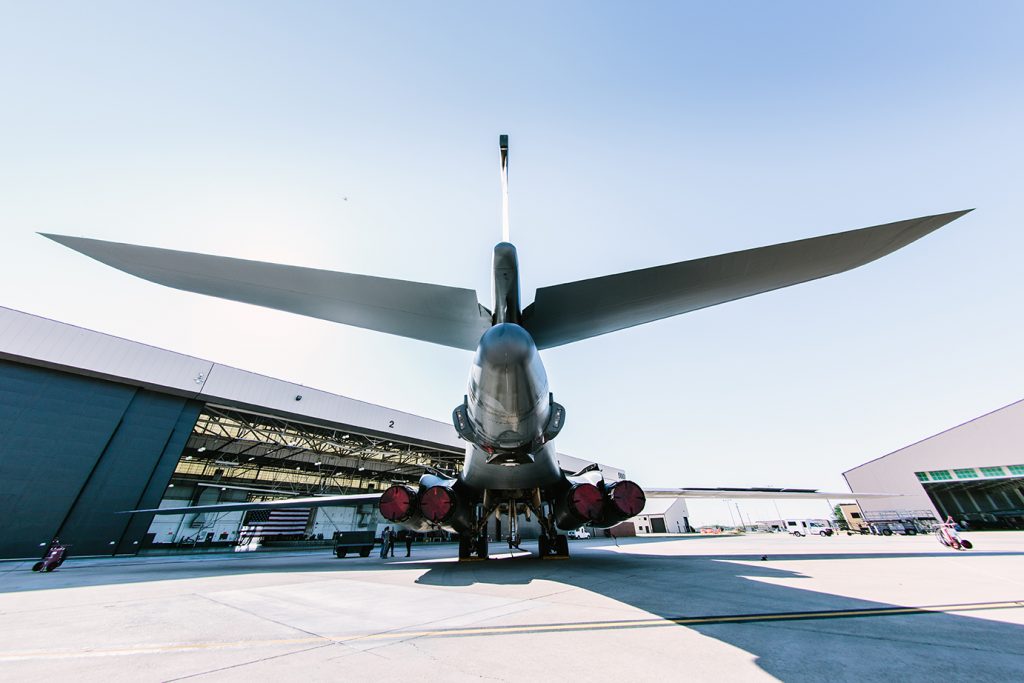
The first thing one notices about the B-1 bomber is its immense size and power.
The sleek plane that has been part of the United States military stands 34 feet tall from the ground to the top of its tail, and it stretches to 146 feet in length. When the wings are swept all the way forward, the wingspan tops out at 137 feet. The bomber was initially produced in the early 1970s before the project was stopped.
The project was re-started in the early 1980s, and the first B-1 was delivered to Dyess Air Force Base in June 1985, and it has been the backbone of the base and, some would claim, the Abilene economy, ever since.
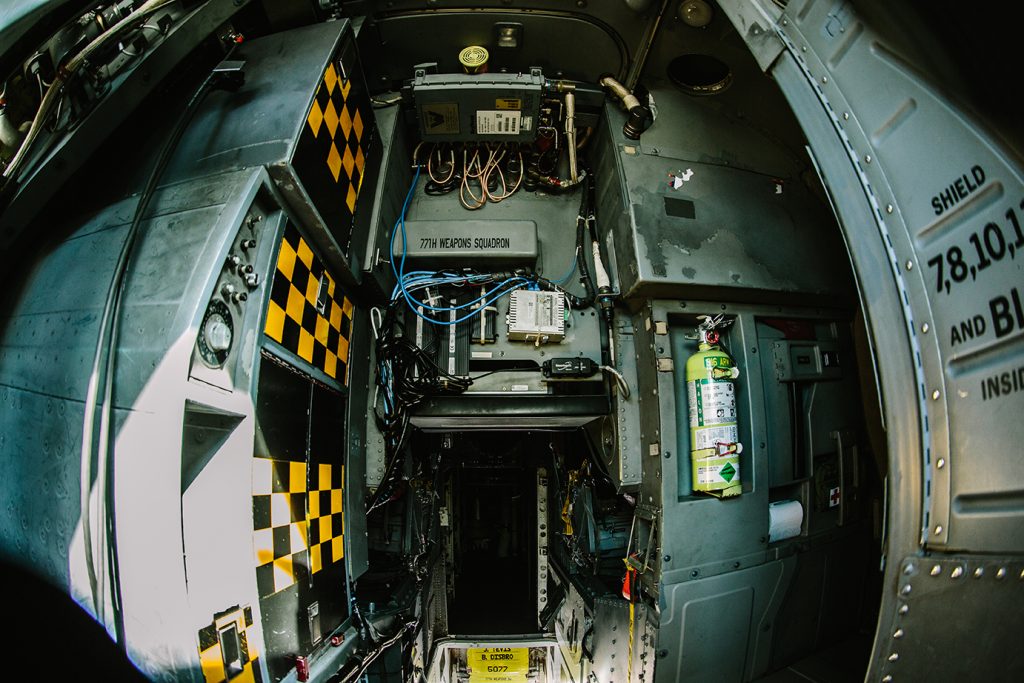
A plane of that magnitude and importance had better be large, and it is. Without payload or fuel, it weighs in at an astonishing 190,000 pounds (95 tons). But what makes the B-1 special is this: it might perform its best work when weighed down with up to 150,000 pounds of fuel and another 50,000 pounds of bombs.
Four engines ignite one of the most powerful long-range bombers the world has ever seen with each pushing out 30,000 pounds of thrust, enough to make the plane reach Mach 1.2, or somewhere in the vicinity of 800-900 mph. The plane can carry up to as many 84 500-pound bombs, or “dumb bombs” as they’re called because they have no guidance system and are simply dropped out of one of the plane’s three bomb bays. What it carries most of the time, however, are 24 2,000-pound GBU-31 guided bombs.
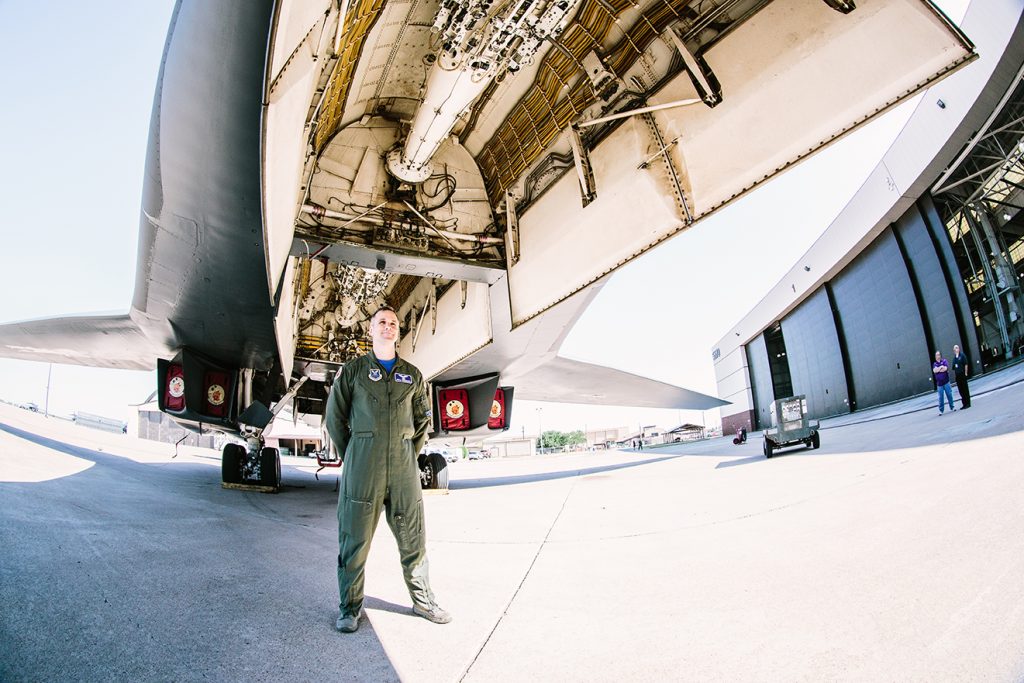
When it’s flying at lower levels – sometimes as low as just 200 feet off the deck – it can move at an astonishing rate of 940 feet per second.
Compared to the outer shell of the plane, the men and women controlling it sit in a rather confined, even claustrophobic, space. A ladder stretches from the belly of the plane to the ground, and that’s the only avenue in or out of the plane other than the ejection seats.
Four airmen sit in the cockpit, but the two in the back – the two Weapons Systems Officers – can’t see the two pilots up front because they have a large panel of screens, dials and buttons in front of them that blocks their view of anything up front. In fact, the two WSO’s only have a very small window to their right and left, respectively, to see outside, leaving them to rely almost solely on their instrument panel to know their location.
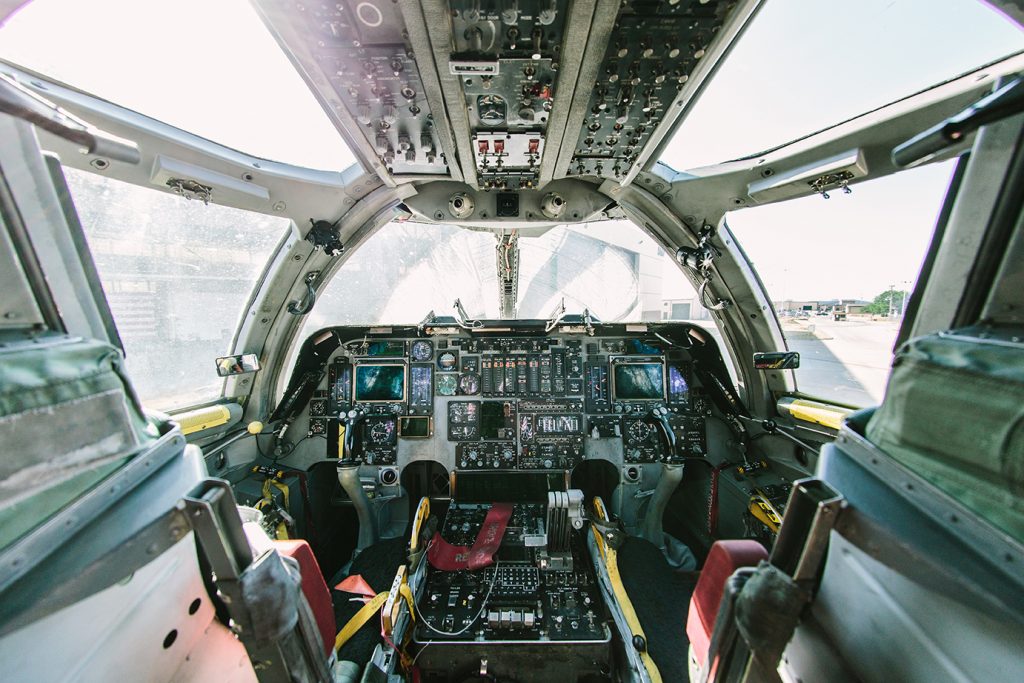
The WSO on the right side handles the offensive weapons (dropping of bombs) while the WSO on the left side is the defensive specialist, defending against all threats. The only way to get to the pilots is to duck underneath the instrument panel and move forward bent at the waist for about 2-3 feet. After standing up, the plane’s latrine is on the left side – necessary for an 18-hour bombing run – storage on the right and up front are the two seats for the pilot (left) and co-pilot (right) and literally hundreds of dials, buttons, switches, screens, lights and triggers used to fly the plane.
Just to get into one of those four seats, an officer must go through months of training at one of four pilot training bases in the U.S. or Combat Systems Officer training in Pensacola, Fla., followed by 6 months of training in Abilene. Every B-1 pilot or WSO goes through Abilene for three months of training flights before being assigned to either Dyess or Ellsworth AFB in Rapid City, S.D., the only two bases in the country where the B-1 is assigned.
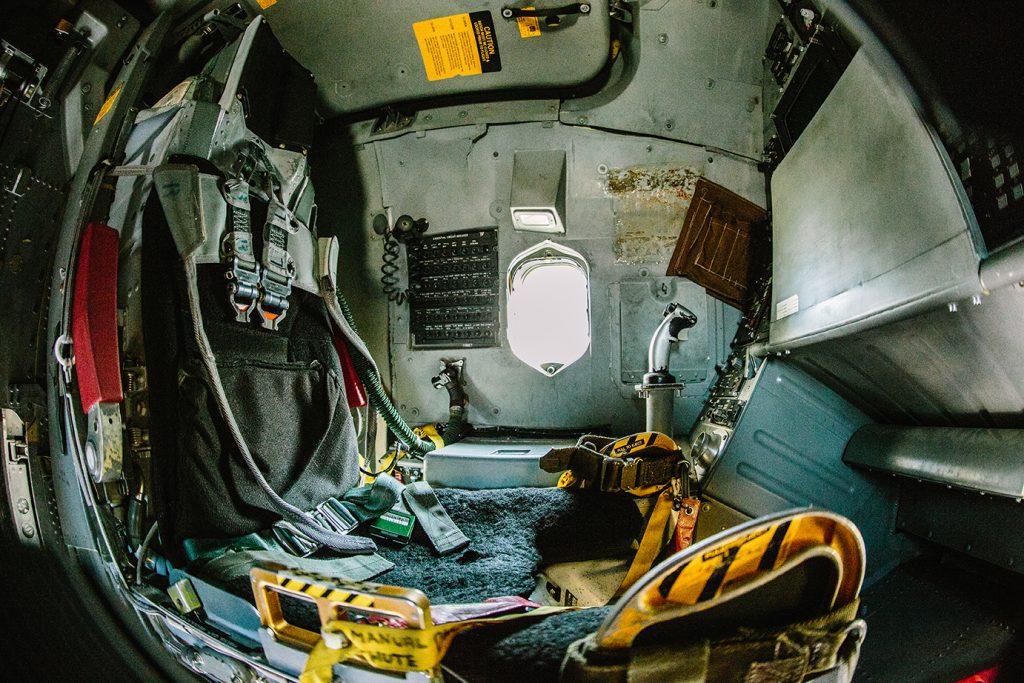
Maj. Ryan Meiergard is a WSO on the B-1 at Dyess and counts his time in the plane as an honor.
“I can’t believe I get to do this for a living,” said Meiergard, who has more than 1,000 hours on the plane and has been on a handful of combat flights. “There’s nothing like going to a job where you don’t know what’s going to happen from one day to the next. It’s a great feeling knowing that we’re helping the guys on the ground, saving them so that they get to go home. That’s just one of the special things we can do with this plane.”




























Leave a Reply